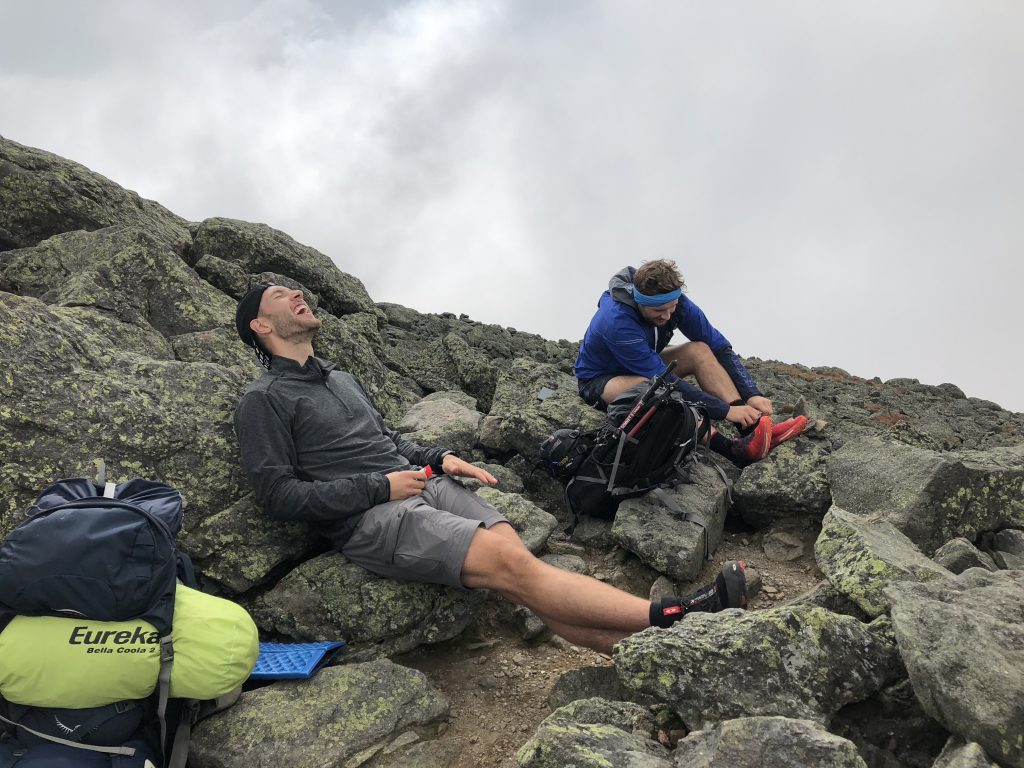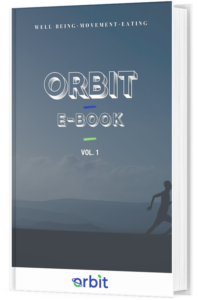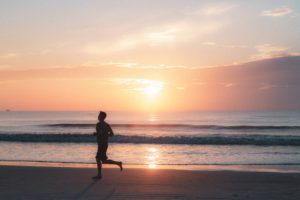Find enjoyable ways to move your body, rather than using exercise to burn calories. Find movement that you are excited for beforehand, during, and after.
Intuitive Eating1 is a book, created by Evelyn Tribole and Elyse Resch, that presents 10 principles to create a healthy relationship with your food, body, and mind. The 10 principles build upon one another. Work on every principle one by one. If you have not read the Principle #1, Principle #2, Principle #3, Principle #4, Principle #5, Principle #6, Principle #7, or Principle # 8 please refer to it before getting into this article.
Fuel Your Body to Want to Move1
Our bodies preferred source of energy is carbohydrates (a.k.a. as pasta, bread, rice, potatoes, oatmeal, etc.). If we have enough fuel in our body, we will be more willing to move. Reversely, if there is not enough food in our body, especially carbohydrates, we might not desire to move at all. As a result of not eating enough carbohydrates, our bodies will use our muscle protein as a source of energy. This signifies that we risk losing our muscle mass if exercising on diets low in carbohydrates.
We Need Carbs to Find Pleasure
Diets low in carbohydrates make exercising extremely difficult and create a huge burden on our bodies. Eating carbohydrates makes exercising a more enjoyable experience. Essentially, pleasure and movement are key when beginning to exercise.
Finding Pleasure in Movement
Physical activity can be associated with negative experiences for some. Here are some examples:
- Physical education teachers who were not qualified and used physical activity as punishment or who made students choose their teams.
- Being forced to take part in sports that you disliked.
- Behavioral reactance: Perception that family members want to control which exercise you do, so you don’t do it.
- Being pushed to do exercise to lose weight.
- Over-training in one activity
- Fitness instructors that had a diet mentality and focus on weight throughout sessions.
- Exercising for external reasons.
Internal Motivation
Internal motivation: Engagement in an activity for the sake of taking part in that activity without any external incentives.
Making movement an enjoyable activity will make you WANT to do it for internal reasons (for pleasure, for yourself, for feeling good). Finding intrinsic motivation (internal reasons) to move is the way you will be able to keep exercising for the rest of your life. However, exercising for external reasons (reasons that are external from yourself) is not a long-term solution. Once you have reached that external goal, you might lose your motivation to continue.
Intuitive Eating and Physical Activity Motivation2
Where does intuitive eating fit in?
One study with of 200 undergraduate women found that :
1. “Intuitive eaters were more likely to report internal motivation for engaging in physical activity” (p.98)
Gast et al.
2. Women who were intuitive eaters were more likely to engage in physical activity for pleasure.
3. Women who were internally motivated to eat were more likely to view physical activity as their self-concept.
What, When, Who, Where, How?3,4,5,6
1. What type of movement do you truly enjoy?
Martial arts; dance; gardening; running; swimming; biking; strength training; hockey ?
2. Do you like moving alone or with other people?
Group-based exercise with people of the same age category as yourself has been shown to be attractive for both older and younger adults.
3. Do you derive pleasure from exercising outside, or inside?
Research has found a positive link between physical activity in nature and emotional well-being.
4. Is there a time in the day you enjoy moving more?
Physical activity has been shown to energize. Is there a time of the day in which you feel tired? Go for a walk in a staircase! One study found that stair walking is more energizing than caffeine in sleep deprived women.
Some people do not have the luxury of choosing what time of the day to exercise at. If time is a barrier to exercise, consider getting off the bus a few stops early and walking the rest of the way. Consider walking, running, or biking to your destination (work, school, etc.) If listening to podcasts is something you enjoy, consider taking a walk as you listen. If you must call your mother every day, also consider taking a walk as you talk. Unstructured exercise might be a great solution for the busy beavers out there!
5. Do you have a sense of personal control, or accomplishment when exercising?
If you choose an activity in which you feel you are progressing, and mastering new skills, you might experience an improved physical self-efficacy. This means your beliefs about your abilities will improve, which has been proven to predict maintenance of health behaviors. In addition, finding an activity in which you get a sense of accomplishment might feel rewarding and ultimately increase your global self-worth (how you feel about yourself as a whole).
6. What messages have you received from past fitness instructors?
Fitness instructors that emphasize the appearance-related reasons for exercise might have negative effects on your body image during the sessions. Be sure to find instructors that emphasize the health-related reasons for exercise. People who exercise for health-related reasons have been found to have less body anxiety during sessions and to think about their bodies less.
Committing to Exercise for Life (1)
Being Active in Daily Living
Finding time to exercise is not always easy. Finding ways you can integrate movement into your daily living might make long term commitment more realistic.
For example, you may decide to integrate physical activity into your daily commute. You could bike to work, or get out of the bus a couple stops early and walk the rest of the way. You could also consider taking the stairs rather than the elevator.
Make it Fun
Make sure to take the time to think about what you truly enjoy when being active. You may consider:
- playing a sport
- exercising with a buddy
- doing a variety of individual activities
- watching a movie while exercising on a stationary bike
- listening to a podcast as you walk
Make it a Priority
Give yourself a date every day (or almost) to move. Your body deserves it and loves it.
If you are often on the go, pack accordingly:
- Bring a skipping rope
- Pack your running shoes
- Book a hotel with a gym
Feel Comfortable
Wearing clothing that fits and that is comfortable will make exercising much more enjoyable. It will also prevent injury, at times!





